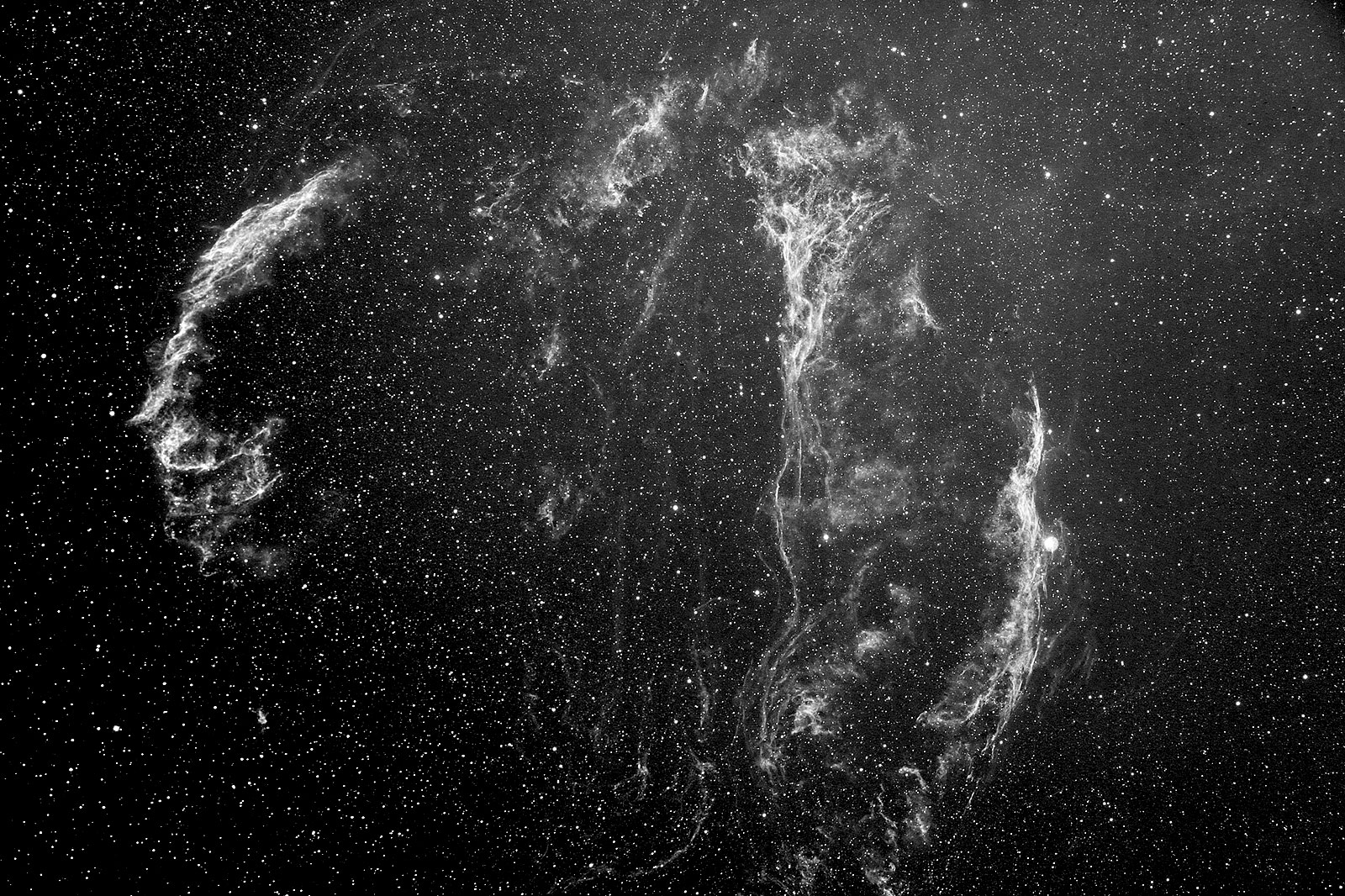This is the Cygnus Loop, a complex of glowing gases that is all that remains of a star that exploded about 5000-10000 years ago. The various parts of the nebula have their own names, but the region is often simply called the Veil Nebula, as its thin, translucent filaments suggest the folds and creases of a diaphanous veil. In addition to visible light, this complex emits radiation in the radio, the infra-red, and the X-ray spectra. It is about 1,500 light years from Earth—our back yard in cosmic terms. The bright star at the right is 52 Cygni. It is unrelated to the nebula. The bit of nebulosity adjacent to 52 Cygni is called the Witch’s Broom due to its shape.
I made this photo on the night of August 19-20, 2010. I used a Takahashi FSQ-106ED astrograph with an SBIG STL-11000 research-grade camera. The mount is an Astro-Physics 1200GTO. Exposure time was 60 minutes (six x 10 min). Guiding was via a Fishcamp Starfish guide camera (uncooled) with PHD software on a Takahashi TOA-150 operating at 2200 mm. The other programs that I used were TheSkyX Professional, Equinox 6, Nebulosity, PixInsight, and Photoshop, all running on a MacBook Pro Core i7 with eight GB of RAM—this is an all-Mac image.
|
